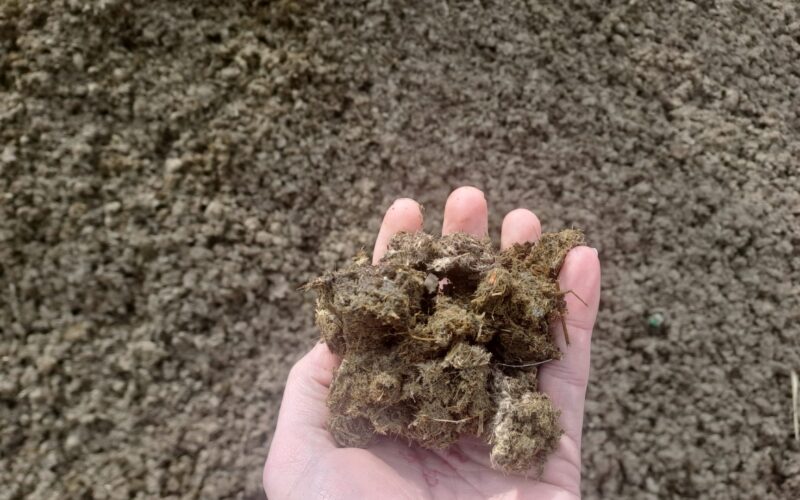Slurry separators can have many benefits such as improving the utilisation of slurry, increasing your farm’s slurry storage, reducing the risk of contamination from thick slurries going through dribble bars, or by simply providing green bedding materials. It is by no means a new technology, however, there are now various options on the market. Contractors can offer mobile slurry separating services, which means that if farms find themselves unable to spread, due to ground conditions, mobile separators have the flexibility to come in and remove the solids out of the slurry, resulting in extra slurry storage capacity. Static slurry separators are generally powered by electric motors and mobile systems can be run from generators or by the tractors PTO.
There are various types of slurry separators and how they work depends on the model and supplier. The most common are screw or roller press separators.
Roller Press
Roller press systems work by supplying slurry onto a rotating drum with adjustable compression rollers. The slurry flows through the rollers by gravity before being pressed by a rubber roller against a screen producing a solid of up to 28% dry matter (DM).
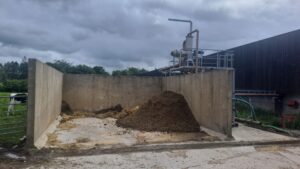 The Screw Press
The Screw Press
The Screw press separator forces slurry through a fine mesh. Unlike the roller separator the slurry is forced under pressure through a fine sieve taking out a higher DM solid, increasing the solid fraction.
Screen type
Screen type separators work by liquid flowing by gravity over a screen with liquid falling through, and solids falling to the bottom. The screens can either be stationary, vibrating or rolling. Liquid falls through the screen whilst solids fall off the screen and are collected at the bottom of the screen.
Decanting centrifugation
Decanting centrifugation works by introducing slurry to a fast rotation, high velocity drum upon which a slower rotating screw removes the solid whilst the liquid fraction falls out at an earlier stage of centrifuge.
Each of these systems have pros and cons and the choice of separator really depends on the type of slurry, the infrastructure of the farm, and what you want to achieve. The separated solids can be air dried and recycled to be used as green bedding.
Improved utilisation
The nutrient components within slurry will change when comparing unseparated slurry to the separated liquid and solid fraction. The process will end up with a lower dry matter liquid and a higher dry matter solid. Separating slurry means you have both less liquid product to apply but a valuable solid fraction, which has more organic matter than the liquid. The solid material can then be transported to further away fields, at a lower cost. Haulage of liquid products is expensive due to the low dry matter. For example, to provide 40 kg Phosphate per ha, 33 m3 of unseparated slurry would be required, whereas this can be provided from 20 tonnes per ha of separated solid fraction. Assuming, 1 m3 of slurry weighs 1 tonne this would be a reduction of 40% of product requiring haulage. This allows a farm to spread its nutrients further, or to target fields that may be inaccessible to tankers as a result of the cost of haulage, or limitations of distance of umbilical pipes. Having, two products allows flexibility to tailor specific products to specific crops. Slurry is a variable product and there will be big differences in nutrient densities based on system and diet of the livestock. The efficiency and type of separator will also be a factor in the nutrient make-up of the separated products. The liquid fraction tends to increase the concentration of nitrogen and potash whereas the phosphate is taken out in the solid fraction. The lower dry matter liquid fraction can have more nitrogen, which can be taken up by grass and crops more effectively.
The solid fraction may also not be a high readily available nitrogen product (>30% RAN in Scotland’s NVZs) and may not be subject to the same closed periods. Individual wastes should be analysed to confirm whether this is the case.
Reduced risk of contamination of silage and ease of spreading
The combination of high dry matter slurry, prolonged periods of dry weather post spreading, and dribble bars leaving slurry in strips can cause contamination of slurry in the silage making process. Especially if silage is tedded and raked back up, dried out slurry can be found in bales or the clamp. This can cause health issues in cattle, reduce palatability and affect the fermentation process of silage. Using a slurry separator regularly throughout the year will reduce the dry matter of the slurry, which will drastically reduce the risk of contamination. Beef slurry, which does not benefit from the addition of parlour washings or rainwater, is at the biggest risks of contamination. Ease of spreading also increases with separated liquid due to less dry matter going through slurry spreading systems, which can lead to pipe blockages.
Increased slurry storage
Some manufacturers claim that the use of a slurry separator can increase the farms slurry storage by 10 – 20%. The accuracy of this claim is dependant on the type of separator, and whether the separator is taking out a high dry matter solid or a low dry matter solid. Generally, the throughput of slurry is inversely proportionate to the quantity of solids removed. The size and cleanliness of screens within the separator and pressure of the press will all impact on the dry matter of the solid to be removed. The more solid that is removed the less liquid fraction will be left over having a greater impact on slurry storage.
Risk of crusting
Working with a lower DM liquid product will reduce the risk of a crust forming on the top of towers and slurry lagoons. This will also reduce the requirement to mix slurry to increase its consistency as the separated fraction will naturally be more consistent than unseparated slurry.
Related resources
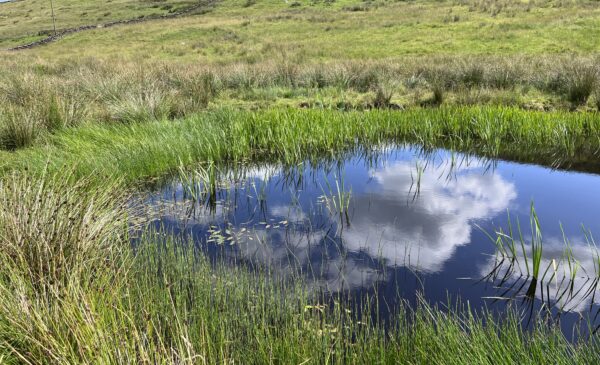
Pond creations on farms
Harry Fisher, Ecological Consultant, SAC Consulting
Everyone loves a win-win, and when it comes to land management that can benefit biodiversity…
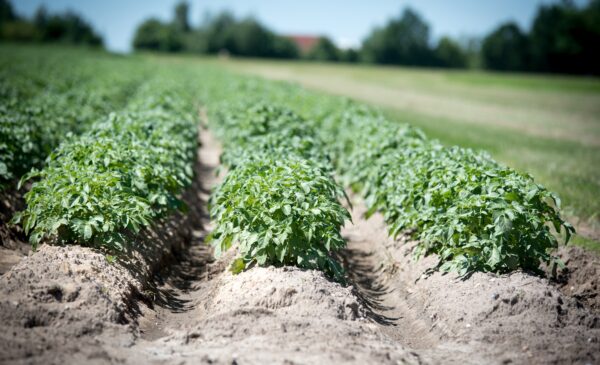
SAOS explores potato irrigation innovations
Scottish Agricultural Organisation Society Ltd.
SAOS have teamed up with the Scottish Potato Co-operative (SPC) to investigate water resource management.…
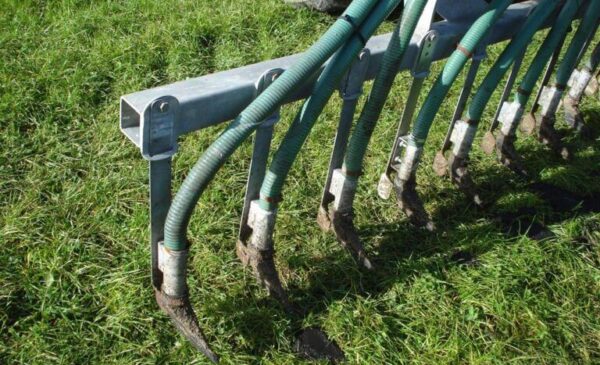
A Recap on Ammonia in Agriculture
Freya Lance, SAC Consulting
Unlike carbon dioxide, nitrous oxide and methane, ammonia is not actually a greenhouse gas. So…

